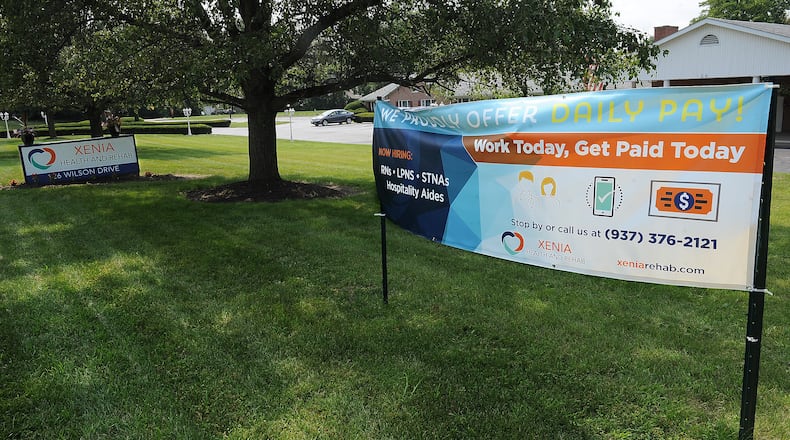In another indicator of low-staffing at nursing homes and rehab centers, area hospitals are having trouble finding facilities to discharge patients to, said Dr. Jeffrey Weinstein, patient safety officer at Kettering Health.
“Some of the nursing homes, both because of how full they are and also because they’re having staffing problems from their staff having COVID, are not accepting patients. And some patients have had a prolonged stay because we can’t get them into a skilled nursing facility,” he said.
This bottleneck has not affected a large number of people, Weinstein said, but it can take a lot of phone calls to find a hospital patient a bed in a long-term facility.
Chip Wilkins, long-term care ombudsman for the Dayton area, who advocates for residents, said meal time is one area where they see the impact of seriously low staffing. Some residents need personal help eating and if they are rushed by staff with too much to do, the resident can become dangerously underweight.
“That is where you really see the impact of low staff numbers, because there are lots of residents that need assistance eating,” Wilkins said.
The American Health Care Association and National Center for Assisted Living released a report Jan. 12 showing that nationally, cases have spiked to high levels among residents and staff during the Omicron-fueled surge.
There were 3,699 workers reported to have a current COVID-19 case on the latest Ohio Department of Health update, which covers Jan. 12-18. This includes workers at nursing homes, assisted living facilities, and group homes for people with developmental disabilities. Among residents at these facilities, 2,467 were reported to have a current COVID-19 case.
Pete Van Runkle, executive director of the Ohio Health Care Association, which represents nursing homes, said the case numbers are lower than the winter 2020-2021 surge. For the week of Dec. 16, 2020, there were around 8,400 long-term care COVID cases and over 5,000 of those cases were residents. Pre-vaccine, these outbreaks were much more likely to be fatal.
“That was the dark days of COVID, as far as long-term care was concerned,” Van Runkle said.
The low point for cases was the week of July 7, when 106 cases were reported.
“A lot of people dismantled their COVID units ... it was a very, very different environment,” Van Runkle said.
The week of Jan. 12 was the high point of the most recent surge, with 4,114 active COVID-19 cases among staff and 2,679 cases among residents reported.
Now cases appear to be edging back down again, though still high and also too early to tell what the longer term trend will be.
“Knock on wood, cross our fingers, all those things, and hope that that’s really the case,” he said.
The Dayton Daily News would like to learn more about the experiences of nursing home operators, workers, residents and residents’ families. If you would like to be be interviewed about how your facility has been doing when it comes to staffing, please email Jordan Laird Jordan.Laird@coxinc.com.
How to get help
The Long-Term Care Ombudsman Program can help with questions and advocate for resident and family concerns, including staffing concerns. The Dayton office can be reached at 937-223-4613 or 1-800-395-8267. The Dayton office serves residents in Montgomery, Preble, Greene, Clark, Miami, Darke, Logan, Shelby, and Champaign Counties.


